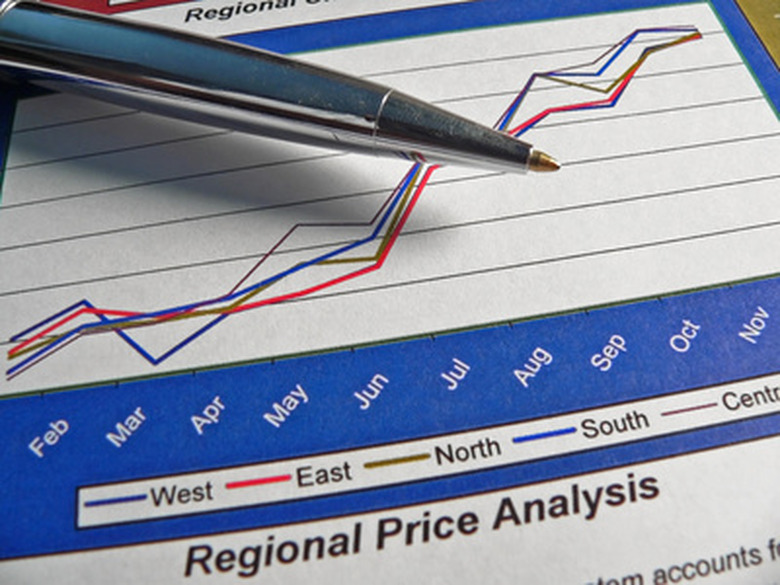How To Create A Population Graph
Population graphs are a way to easily see how a population is increasing or decreasing over time. Population graphs are usually displayed as line graphs: graphs with an x-axis and a y-axis that have one continuous line running from left to right. It's possible to draw a graph by hand, but if you make a mistake it can take a lot of time to erase and fix. Using a dynamic graphing software like Excel is not only easy and fast, but it allows you to correct mistakes in seconds.
Step 1
Enter your x-values into the "A" column of the Excel worksheet. Population graphs always have time (for example, days, months or years) on the x-axis. To plot a graph of the U.S. population over the last 30 years, put "1990" in cell A2, "2000" in cell A3 and "2008" in cell A4.
Step 2
Enter your y-values into the "B" column of the Excel worksheet. The U.S. population was 248,709,873 in 1990, 281,421,906 in 2000 and 304,059,724 in 2008, so enter those values into cells B2, B3 and B4, respectively.
Step 3
Enter your x-axis and y-axis labels into the worksheet. Put "Date" into cell A1 and "Population" into cell B1.
Step 4
Highlight the entire range of cells. Left click on cell A1, and drag the cursor to cell B4.
Step 5
Click on the "Insert" tab on the ribbon (the toolbar). Click on the down arrow beneath "Charts" and the down arrow beneath "Line." Choose "Line With Markers." This creates your population line graph.
Step 6
Click on the blue "date" line and hit the delete key to tidy up your graph.
TL;DR (Too Long; Didn't Read)
You can change many aspects of your graph, including how the x-axis and y-axis are displayed. To change those settings, visit the "Axes" tab locate at "Chart Tools" then "Layout." To change inputs if you have made an error, change the information in the cell (not on the graph). Excel will update the graph with the new information.
Cite This Article
MLA
Ellen, Stephanie. "How To Create A Population Graph" sciencing.com, https://www.sciencing.com/create-population-graph-5802262/. 24 April 2017.
APA
Ellen, Stephanie. (2017, April 24). How To Create A Population Graph. sciencing.com. Retrieved from https://www.sciencing.com/create-population-graph-5802262/
Chicago
Ellen, Stephanie. How To Create A Population Graph last modified March 24, 2022. https://www.sciencing.com/create-population-graph-5802262/
